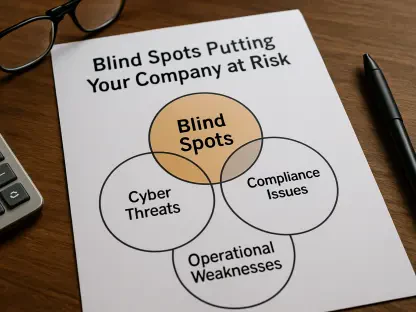The automotive manufacturing industry has increasingly become a prime target for cybercriminals, creating urgent challenges in ensuring the security of operational technology (OT) environments. As advancements in mobility technologies and connectivity grow, so too do the security threats that these enhancements bring along. This article delves into the most prevalent threats facing automotive manufacturing and proposes practical protection measures necessary to safeguard these operations, highlighting the critical need for enhanced cybersecurity strategies in the sector.
Rising Cyber Attacks in Automotive Manufacturing
Recently, the automotive industry has experienced a notable surge in cyber attacks, with entities such as original equipment manufacturers (OEMs), suppliers, integrators, and dealers all falling prey to these threats. Ransomware attacks from groups including LockBit, Black Basta, and Qilin have been particularly severe. These attacks typically exploit vulnerabilities during the critical period between the discovery of a system vulnerability and the deployment of its patch, a window known as 1-day or n-day attacks. This period of exposure is often leveraged by cybercriminals to infiltrate systems and significantly disrupt operations.
Moreover, social engineering remains a widespread method employed by cybercriminals to breach internal networks within the automotive manufacturing sector. Advanced Persistent Threat (APT) groups have notably escalated their tactics, utilizing sophisticated measures such as zero-day attacks to penetrate previously undetected vulnerabilities. The rising frequency and advanced nature of these cyber attacks emphasize an urgent necessity for robust cybersecurity strategies in automotive manufacturing to prevent critical operational disruptions and data breaches.
Complexity of Operational Technology Environments
Automotive manufacturing operational technology environments are becoming more complex, further complicating the security landscape. Within these environments, manufacturing plants often rely on ‘flat’ networks with minimal segmentation. This lack of segmentation facilitates the rapid spread of breaches once they have penetrated the network. Consequently, a single breach can potentially impact numerous systems and processes, making robust cybersecurity measures more crucial than ever.
Manufacturing facilities in the automotive sector frequently host both state-of-the-art and decades-old systems within the same environment. This coexistence of varying technologies results in diverse and sometimes outdated operating system support and patching challenges. The extensive array of different operating systems includes newer systems that require frequent updates alongside older systems that may no longer be supported by their original manufacturers. This diversity exacerbates security risks and complicates efforts to maintain a consistent and proactive security posture across the entire OT landscape.
Vulnerabilities in the Supply Chain
The automotive industry’s tightly integrated supply chain introduces additional layers of vulnerability. Many operational technology systems include vendor-installed remote access, which often receives insufficient oversight from both OT and IT personnel. This oversight gap presents substantial security risks, as unchecked remote access can serve as a conduit for malicious actors to infiltrate critical systems. Given the interconnected nature of supply chains, a single breach can cascade through multiple levels, causing extensive disruptions throughout the network.
Manufacturers can mitigate such risks by ensuring up-to-date perimeter asset security and conducting comprehensive cybersecurity training programs. Addressing vulnerabilities through these proactive measures can notably diminish the risk of 1-day and n-day attacks. A tailored approach geared towards advanced threat detection and response is also crucial to evading zero-day attacks, which exploit unknown system vulnerabilities. Consequently, prioritizing protection measures over mere visibility serves as an effective strategy to safeguard manufacturing operations from potential cyber threats.
Proactive Security Measures
The implementation of proactive security measures is critical for bolstering cybersecurity within automotive manufacturing. Establishing baseline protection for mission-critical devices and production lines is essential to prevent total operational shutdowns in the event of cyber attacks. Recommended practices such as OT Zero Trust measures, including network segmentation, virtual patching, and endpoint protection in industrial control systems (ICS), are key strategies for safeguarding processes and ensuring business continuity.
Automotive manufacturers should take a more assertive and prepared stance against cyber threats. This involves swiftly implementing effective security measures and continuously providing training for cybersecurity personnel. By adopting a proactive approach, automotive manufacturers can substantially mitigate risks and maintain resilience against the evolving landscape of cyber threats. This heightened vigilance and readiness are indispensable in the face of increasingly sophisticated attacks targeting the automotive sector.
Specialized OT Security Resources
Operational Technology (OT) cybersecurity personnel must possess a deep understanding of OT device requirements alongside comprehensive knowledge of IT security concepts. Effective communication and collaboration within the organization are critical components for a robust defense strategy. Engaging OT-specific partners who are well-versed with the industry’s evolving security needs, regulations, and standards, including compliance with entities such as NIST, TISAX, and IEC, can significantly enhance defensive measures. These collaborations ensure that cybersecurity strategies align with the latest industry standards and best practices, fortifying the industry’s defenses.
Leveraging specialized OT security resources helps automotive manufacturers maintain operational integrity and continuity by aligning their cybersecurity strategies with contemporary industry standards. This approach not only bolsters the organization’s overall security posture but also ensures sustained operational efficiency by preemptively addressing potential vulnerabilities and mitigating threats before they can escalate into severe breaches.
Emphasizing Protection Over Visibility
While traditional cybersecurity wisdom emphasizes the importance of visibility as a foundational step, the unique and intense threat landscape faced by the automotive industry necessitates an immediate focus on protection. Given the high stakes, diverse OT environments, and tightly integrated supply chains, automotive manufacturers must adopt a more assertive and prepared stance against cyber threats. The primary goal must be the preservation of operational integrity through the prompt implementation of effective security measures.
This approach includes establishing robust baseline security measures for critical systems and continuously leveraging OT Zero Trust strategies. Additionally, fostering ongoing training and collaboration across the organization ensures that personnel remain vigilant and responsive to emerging threats. By adopting such pragmatic and forward-looking strategies, automotive manufacturers can significantly mitigate risks and maintain resilience against the ever-evolving array of cyber threats targeting the sector.
Conclusion
The automotive manufacturing industry has increasingly become a prime target for cybercriminals, resulting in urgent challenges to secure operational technology (OT) environments. With advancements in mobility technologies and connectivity, the associated security threats have also grown. As automotive technology evolves with features like IoT and autonomous driving, cyber threats are becoming more sophisticated. This article examines the most prevalent threats facing automotive manufacturing, including malware, ransomware, and data breaches. Additionally, it proposes practical protection measures like network segmentation, continuous monitoring, and employee training. By doing so, it underscores the critical need for enhanced cybersecurity strategies within the sector. Comprehensive defense tactics are essential to prevent or mitigate the risks posed by cyber attacks, ensuring not just the safety and reliability of vehicle production but also the protection of valuable intellectual property and sensitive data. This vigilant approach helps safeguard the future of the automotive manufacturing industry against an ever-evolving landscape of digital threats.









